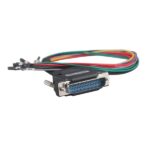The world of manufacturing is constantly evolving, and with it, the demand for skilled professionals in Computer Numerical Control (CNC) programming. If you’re considering a career path that offers both stability and growth potential, CNC programming might be an excellent choice. But is CNC programming a good career in the next 20 years? Let’s delve into the details.
The original poster in a forum shared their career journey as a CNC programmer, starting from an entry-level position in 2008 to gaining expertise in 5-axis programming. This personal account highlights a common trajectory in the field: beginning with basic operations and progressively mastering more complex techniques, leading to increased earning potential. Starting at $8 an hour and growing to $30 an hour over several years, this individual’s experience reflects the value of experience and specialized skills in CNC programming. The jump in salary when transitioning to 5-axis programming, as indicated by online salary searches showing figures between $112,074 and $138,674, further emphasizes the financial rewards for advanced CNC skills.
The increasing adoption of automation and advanced manufacturing technologies suggests a strong demand for CNC programmers in the coming decades. Industries ranging from aerospace and automotive to medical devices and consumer electronics rely heavily on CNC machining for precision manufacturing. As these industries continue to grow and innovate, the need for skilled CNC programmers to operate and optimize these machines will only intensify. This growth is further fueled by the increasing complexity of parts being manufactured, requiring programmers proficient in multi-axis machining and advanced CAM software.
Furthermore, the skills acquired as a CNC programmer are highly transferable and valuable across different sectors. Whether you are working in a small machine shop or a large manufacturing corporation, the core competencies of understanding blueprints, CAD/CAM software, and machining processes remain essential. This versatility provides CNC programmers with job security and the flexibility to move between industries or specialize in niche areas like 5-axis or Swiss-style machining.
While automation might raise concerns about job displacement, in the realm of CNC programming, it’s more likely to elevate the required skillset. The future of CNC programming leans towards integrating automation and robotics, requiring programmers to not only operate machines but also to design and optimize automated manufacturing processes. This shift necessitates continuous learning and adaptation, but it also opens up new avenues for CNC programmers to become integral in designing and managing advanced manufacturing systems.
For individuals considering entering this field, a combination of formal education and hands-on experience is often the most effective path. As the original poster mentioned, an Associate’s Degree in Machine Tool Technology and practical experience with CAM software like Mastercam can provide a solid foundation. Moreover, continuous learning and upskilling, particularly in advanced areas such as 5-axis programming and automation integration, are crucial for career advancement and maximizing earning potential in the long run.
In conclusion, considering the ongoing growth in manufacturing, the increasing complexity of machining processes, and the demand for automation, CNC programming presents a promising career path for the next 20 years. While the field will continue to evolve, the core skills of CNC programming will remain highly relevant and valuable. For those willing to invest in education, gain practical experience, and continuously adapt to technological advancements, a career in CNC programming offers both stability and significant earning potential in the foreseeable future.
